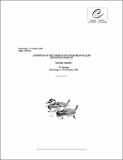Por favor, use este identificador para citar o enlazar a este item:
http://hdl.handle.net/10261/63230COMPARTIR / EXPORTAR:
 SHARE
BASE SHARE
BASE
|
|
| Visualizar otros formatos: MARC | Dublin Core | RDF | ORE | MODS | METS | DIDL | DATACITE | |

| Título: | International Single Species Action Plan for the White-headed Duck Oxyura leucocephala. |
Autor: | Hughes, B.; Robinson, J.A.; Green, Andy J. CSIC ORCID ; Li, D.; Mundkur, T. | Fecha de publicación: | 2004 | Editor: | Cambridge University Press | Citación: | (2004) | Resumen: | The White-headed Duck Oxyura leucocephala is listed as Endangered on the IUCN Red List of Threatened Animals. It is also listed on Annex I of the European Union Directive on the Conservation of Wild Birds (79/409/EEC) (Birds Directive), on Appendix II of the Convention on the Conservation of European Wildlife and Natural Habitats (Bern Convention), on Appendix I of the Convention on the Conservation of Migratory Species of Wild Animals (Bonn Convention), and Appendix II of the Convention on International Trade in Endangered Species (CITES Convention). The White-headed Duck is a highly aquatic diving duck of the stifftail tribe Oxyurini. Globally, there are four populations; two of which are declining, one stable and one increasing. The decreasing populations include the main Central Asian population of 5,000-10,000 birds and the Pakistan wintering population, which is on the verge of extinction. The resident North African population (400- 600 birds) is stable and the Spanish population (ca. 2,500 birds) increasing. The White-headed Duck occurs regularly in 26 countries, and in another 22 as a vagrant. Nine countries hold significant breeding numbers (Algeria, Islamic Republic of Iran, Kazakhstan, Mongolia, Russian Federation, Spain, Tunisia, Turkey, and Uzbekistan), but most are concentrated in Mongolia, Kazakhstan, Russian Federation, and Spain. Birds occur commonly on migration in 10 countries, and in winter (December to February) in 13. The most important wintering countries differ from year-to-year, presumably depending on weather conditions. In recent years, 10 countries have held over 1,000 birds (Azerbaijan, Bulgaria, Greece, Islamic Republic of Iran, Israel, Kazakhstan, Russian Federation, Spain, Turkey, and Uzbekistan – see Table 2). Seven countries hold significant numbers of birds throughout the year (Algeria, Islamic Republic of Iran, Russian Federation, Spain, Tunisia, Turkey, and Uzbekistan). | URI: | http://hdl.handle.net/10261/63230 |
| Aparece en las colecciones: | (EBD) Libros y partes de libros |
Ficheros en este ítem:
| Fichero | Descripción | Tamaño | Formato | |
|---|---|---|---|---|
| com.instranet.pdf | 575,66 kB | Adobe PDF |  Visualizar/Abrir |
CORE Recommender
Page view(s)
359
checked on 21-may-2024
Download(s)
957
checked on 21-may-2024
Google ScholarTM
Check
NOTA: Los ítems de Digital.CSIC están protegidos por copyright, con todos los derechos reservados, a menos que se indique lo contrario.
